A gorgeous leopard to start the week. Enjoy!
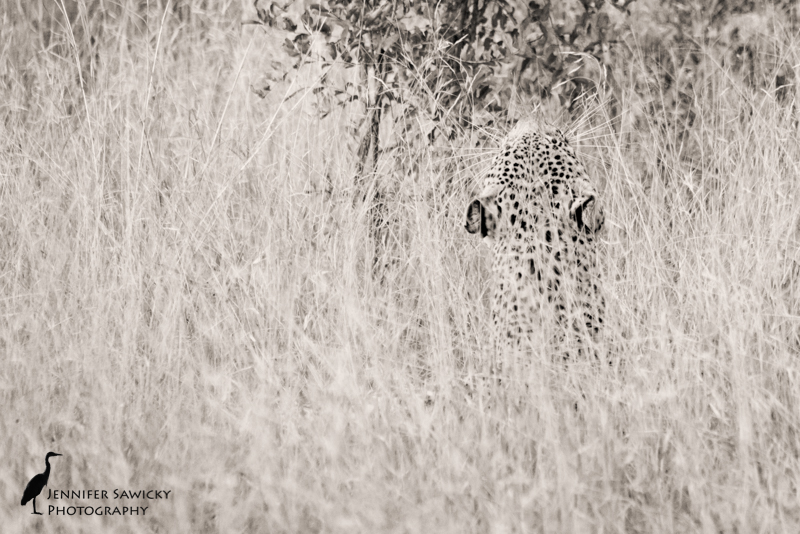
Please visit:
www.jennifersawickyphotography.com for wildlife, landscape and nature inspired artwork.
and
https://shopvida.com/collections/voices/jennifer-sawicky for textiles inspired by my photography.
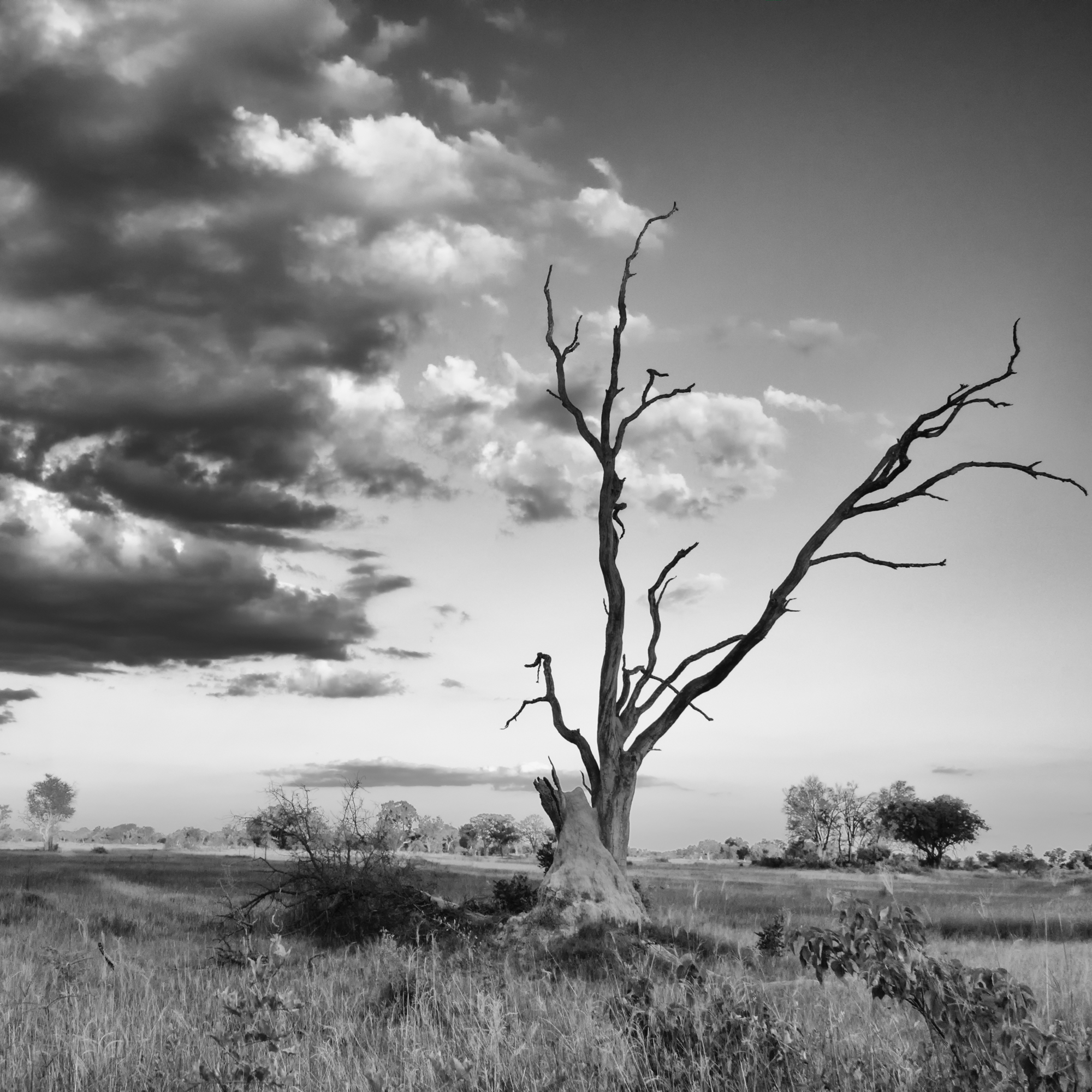
Showcasing the beauty of Mother Nature
A gorgeous leopard to start the week. Enjoy!

Please visit:
www.jennifersawickyphotography.com for wildlife, landscape and nature inspired artwork.
and
https://shopvida.com/collections/voices/jennifer-sawicky for textiles inspired by my photography.
It’s difficult to distill the last few days of my trip into a few paragraphs, because we saw so much, and had so many amazing and memorable moments, that I don’t really know how to explain it all and frankly, I don’t know if I even have the words to properly convey how it all felt. Returning to Londolozi Tree Camp felt like a homecoming. We were warmly welcomed with hugs, had the chance to reconnect with many familiar faces and were able to relax in what is, without a doubt, our very favourite place on the planet.
We were surprised from the outset, as we had requested our ranger from our previous trip, Dave, when we booked the trip, but then found out he was leaving Londolozi to take some time to travel. I thought the dates were such that he would be finished just before we arrived, but it turned out we were his last clients, and we had three wonderful days with him and his tracker, Judas, to explore the property. Since we had been on safari with Dave before, he knew exactly what we liked, which was to head out and see what happens, and we did just that. At the end of our time, Dave said he figured he had the 6 best consecutive drives of his career. The experiences we had were just that good.
I will be sharing loads more photos from my time at Londolozi in future posts, but for now, here are a few of the memorable moments from the last stop on my African adventure.
Our first game drive, we ended up amongst two male leopards in a territory battle! It was definitely reminiscent of our very first trip to Africa, when we experienced the same thing on Londolozi (with different leopards, of course). We had some crazy 4×4 trekking through the bush, watched and listened to the posturing leopards until the sun was going down, and then went for a leisurely drinks stop before making our way back to camp.
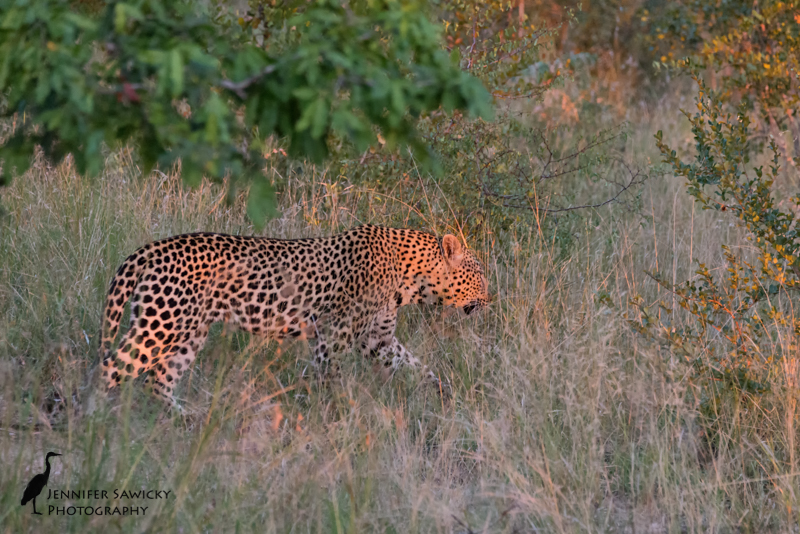
The next morning we headed out and found ourselves with two female and one male lion, and listened to the male roaring away the morning, calling to his brother who was some distance away. His brother was injured with a broken leg, and sadly, I heard has since died during a conflict with rival lions.
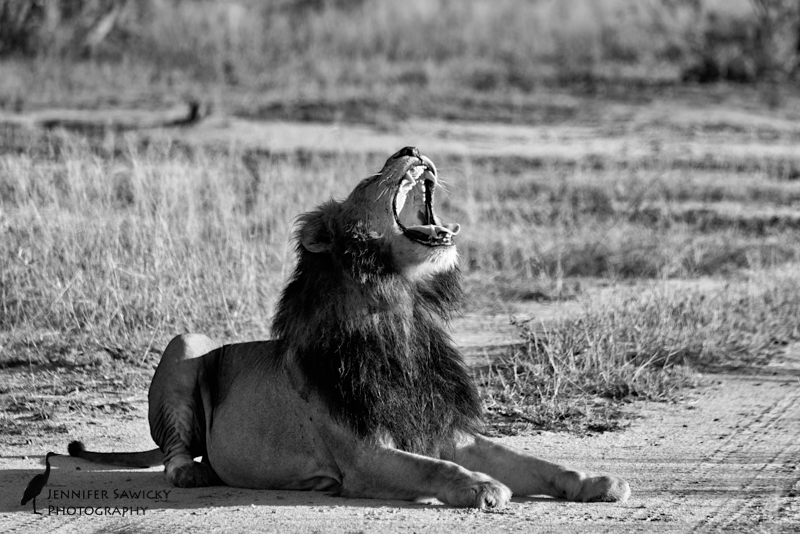
Our second afternoon game drive found us having a leisurely drive around the reserve, until we heard on the radio that a lioness had been found on a giraffe kill with her two tiny cubs. As this was Dave’s favourite lioness, we went to the sighting, and as it started to grow dark, we watched the tiny cubs scampering around under the bushes, and gnawing on the giraffe’s horns and ears. The Mom, the Tsalala tailless lioness, is one that I recall seeing on my previous trip to Londolozi.
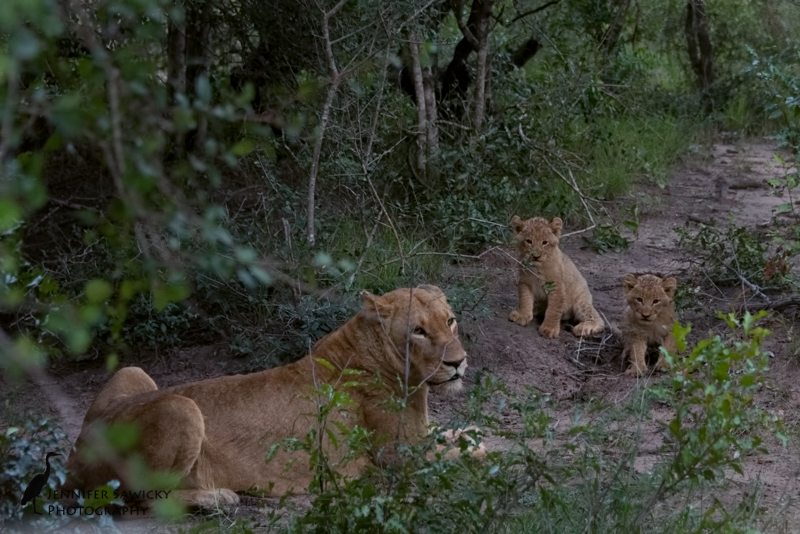
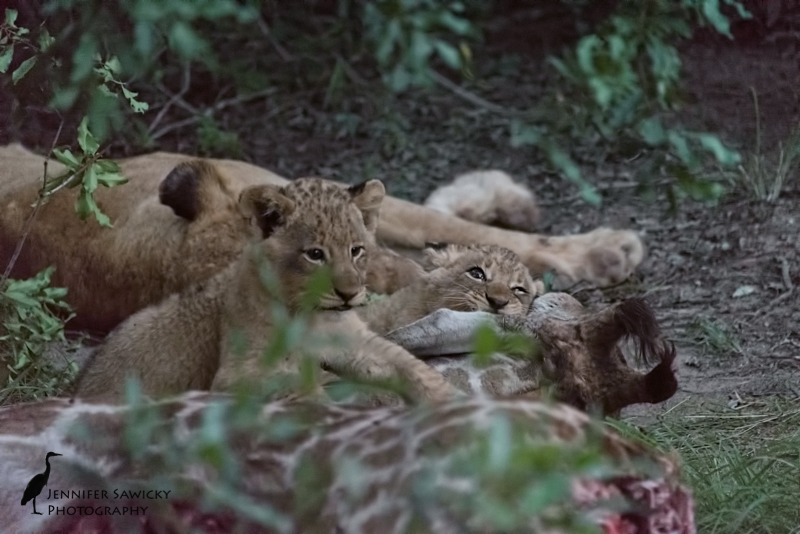
Our second morning drive, we ended up on some tracks of a leopard that was denning with tiny cubs that no one had seen, but didn’t end up finding her. We did end up seeing another leopard and her two cubs though, and spent an enjoyable morning watching the cubs playing. They spent ages scampering around a swampy pool, climbing on fallen trees, and attacking each other with paw swipes and tail bites. We were even entertained watching Mom join in on the action, chasing the cubs around and pouncing through the grass at them.
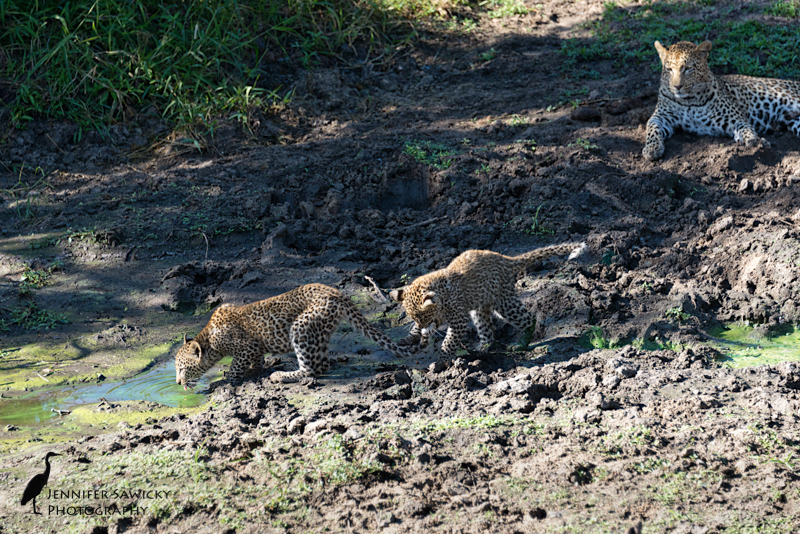

Our third afternoon drive was a quiet affair at the start; we enjoyed the scenery and some general game, but then came across tracks of the female leopard with tiny cubs, and began looking further to see if we could find a sign of her. Another vehicle ended up having the sighting of a lifetime, seeing her a couple hundred meters from where we were looking, moving one of her cubs to a new den site. We were able to drive past and see her moving one of the cubs within the den, and then set off on her hunt. Photographically, there isn’t much to show for it, but I have memories that will last forever. After that beautiful moment, we thought we were stopping for a sundowner drink, but instead found a private bush barbecue set up for us in a dry riverbed. Two of the camp managers, Phil and Will, were making us a gourmet BBQ dinner, while we enjoyed craft beers in the bush and lots of wonderful conversation. We headed back to camp that evening driving beneath a blanket of stars. It was truly a magical last night in the bush.
Our final game drive, we set out from camp and quickly came upon a small herd of elephants that had found an underground water pipe and dug it up to have a drink. Here I had an experience with the elephants that is almost hard for me to describe. There was a young calf, probably a year old, drinking with his Mom, and he walked over to the vehicle on three different occasions, stood right next to me, and stared into my eyes. The look on his face could only be described as smiling. He didn’t pay attention to anyone else in the vehicle, and went back to his Mom after each visit. I could have reached out and touch his trunk or his ear, he was so close to me. I was awed after this, and then about 10 minutes later, another mother came by with a calf even younger, and after he took a drink, he came right over to the vehicle and looked into my eyes. He too looked as if he was smiling, and then headed back to his Mom. I’ve always felt very drawn to elephants and consider them to be a spirit animal for me, so this had to be one of the highlights of any game drive I have been on.
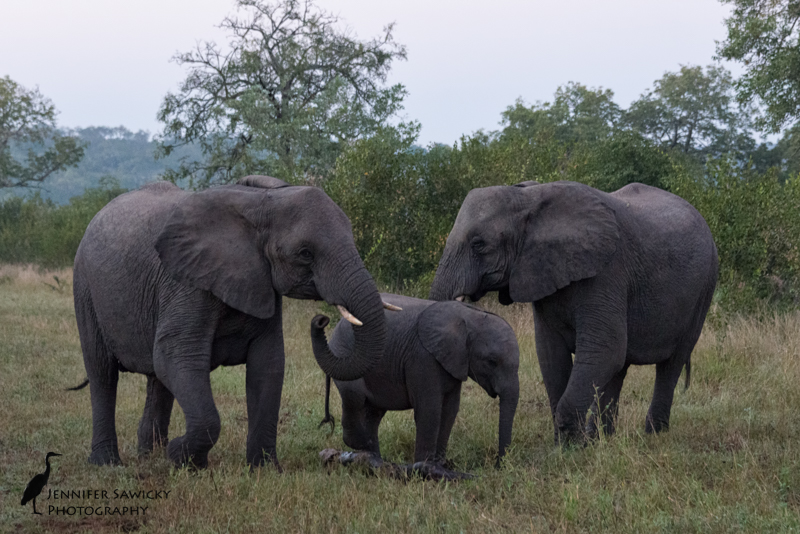

After my experience with the elephants, I didn’t think that things could get any better. Dave laughed and suggested we go look for Tamboti, the leopard we caught a glimpse of the night before, so we headed off to the area that we saw her in previously. And there we saw her, carrying one of her cubs, moving den sites again. We were able to follow her, find the location of the new den, and spend time watching the two tiny leopards peek out from the hollow log and play with each other and their Mom on the grass outside. Seeing a leopard at all is an amazing experience, but to see how carefully the Mom walked along with her baby, occasionally setting it down to rest, was a magical experience. The location we were in was very dense, so after hundreds of rapid fire photographs, we moved off to allow another vehicle the opportunity to spend time with the cubs before they settled down to sleep.
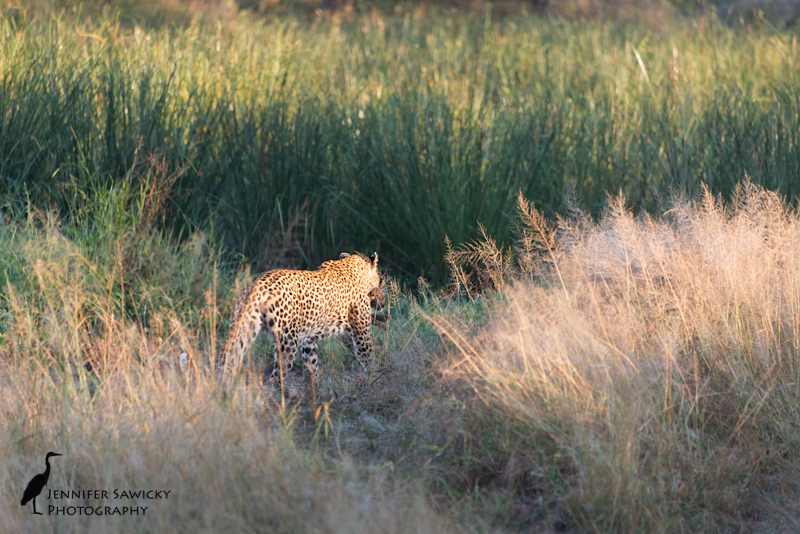
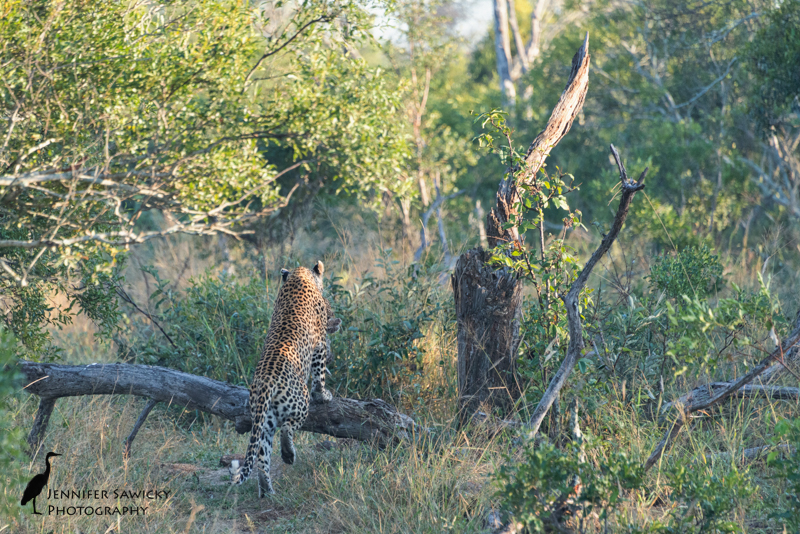
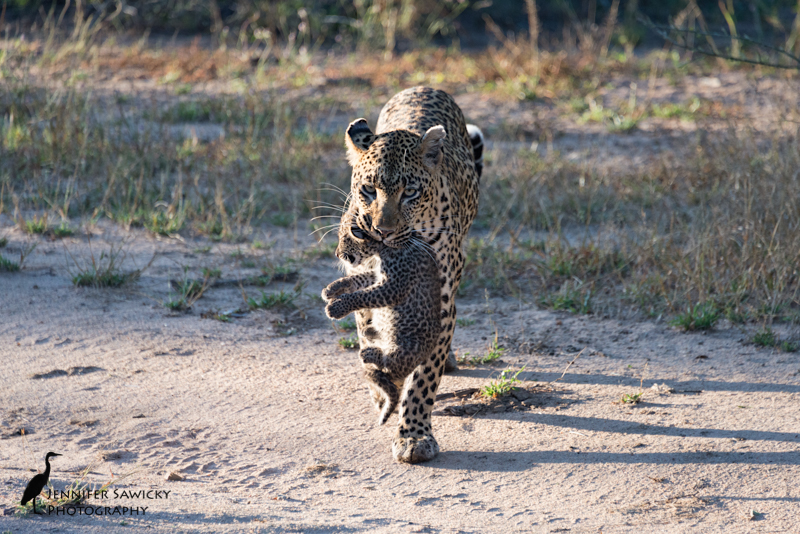
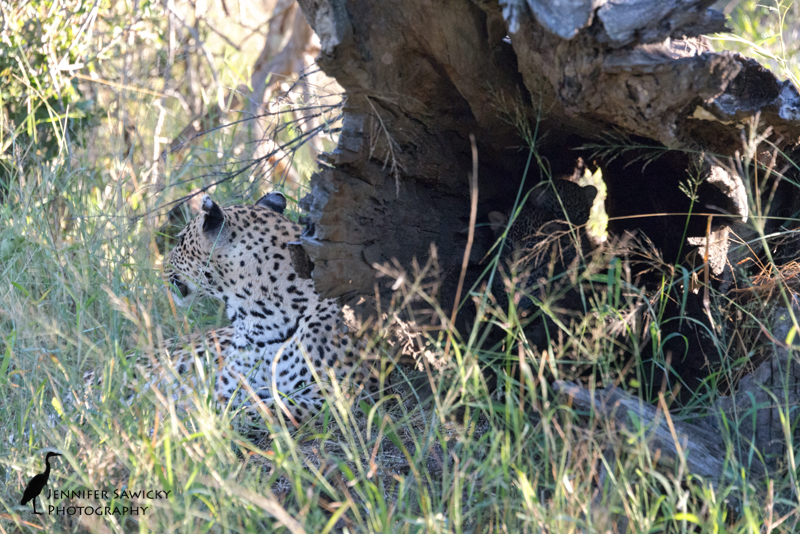
You’d think that would be enough, but we still had one more sighting on that morning drive. We heard another vehicle was following up on lions calling in another area of the reserve, so we went over to give assistance. It didn’t take very long before we found a male and female lion, obviously a mating couple, each lazing about on their own termite mound. They periodically got up and moved to new spots and we followed along. At one point, we parked up against a termite mound to watch them walking down the road towards us, and they proceeded to climb onto the termite mound and mate in front of our vehicle. They were about 2-3 feet from the tracker’s seat (luckily he was in the back with us).

It was bittersweet having our last breakfast before heading to the airstrip and beginning our journey back home. The only way I can make myself get on the plane, is to know in my heart that I will be back to the beauty of Southern Africa again sometime (hopefully soon!)
I can say in all honesty, if I could only pick one place to return to for the rest of my life, it would be Londolozi. It is a truly special place for so much more than just the animal sightings.
Please visit:
www.jennifersawickyphotography.com for wildlife, landscape and nature inspired artwork.
and
https://shopvida.com/collections/voices/jennifer-sawicky for textiles inspired by my photography.

Starting the week off with an elephant just seems like the right thing to do. Wishing everyone a fantastic week ahead.
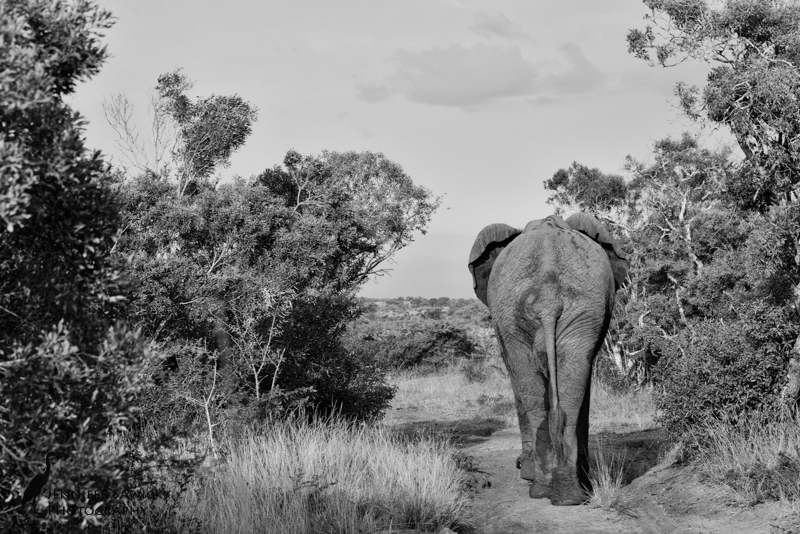
Please visit:
www.jennifersawickyphotography.com for wildlife, landscape and nature inspired artwork.
and
https://shopvida.com/collections/voices/jennifer-sawicky for textiles inspired by my photography.
The WordPress photo challenge topic for the week are things that are distracting, and I need look no further than birds. Just yesterday, while taking my dog for an afternoon walk, a flash of yellow caught my eye in the bush, and I ended up rather mesmerized at the side of the road trying to photograph the birds flitting passed, mostly so I could try and identify them later. Those photos aren’t worth sharing, but I’m no different whilst on holiday either. Birds are definitely one of the things that stop me in my tracks so I can gaze at them in wonder.
I hope you enjoy my selection of photos.





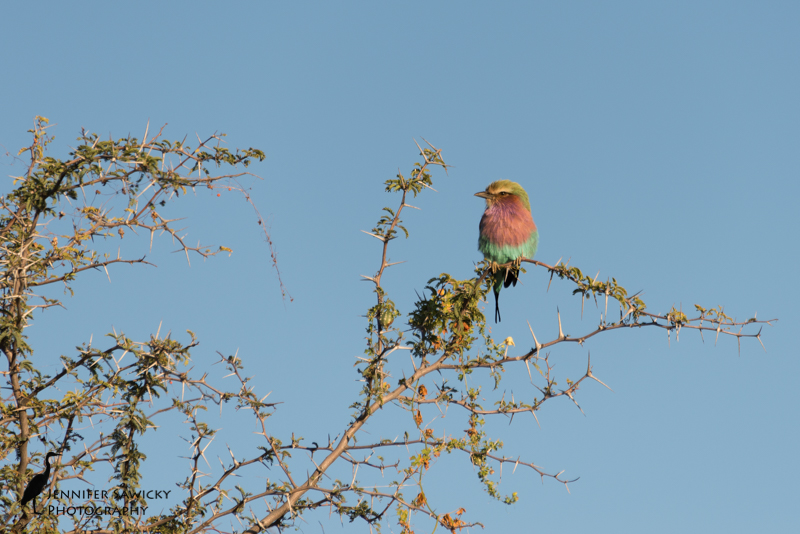
Please visit:
www.jennifersawickyphotography.com for wildlife, landscape and nature inspired artwork.
and
https://shopvida.com/collections/voices/jennifer-sawicky for textiles inspired by my photography.
It was a soggy day flying from Phinda to Ngala, which was my second to last stop on my trip. It’s tough thought o be too upset about rain in locations where it has been desperately needed for years, and besides, we only had two days with any rain over a four week period, which is pretty fantastic from a sightseeing perspective (especially in an open vehicle). I have spent time at Ngala previously (you can check out some past highlights here if you want).
We only had two days at the camp, but they were filled with lots of laughs with our wonderful ranger Lee-Anne, some fantastic game viewing, and really great meals. The first game drive was a soggy one, but we didn’t let that get our spirits down, and we ended up seeing both lion and leopard on the same game drive – not too shabby!
I hope you enjoy a small selection of the photos that I took at this beautiful property.


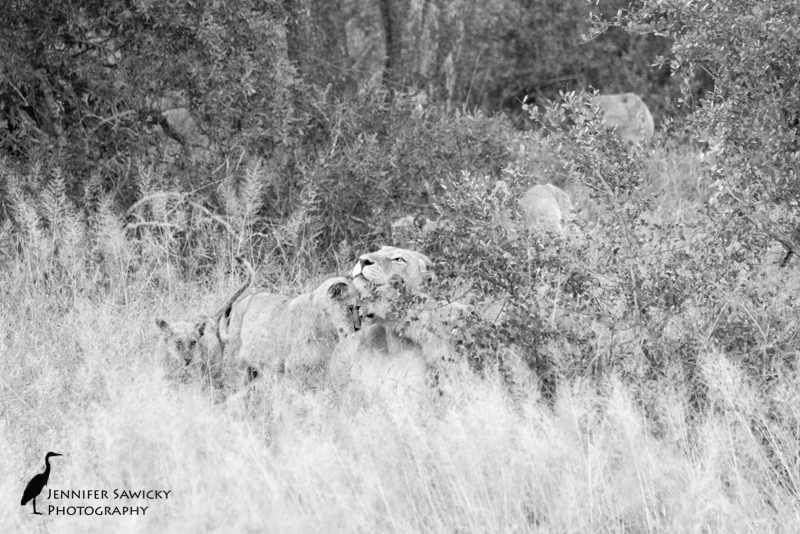
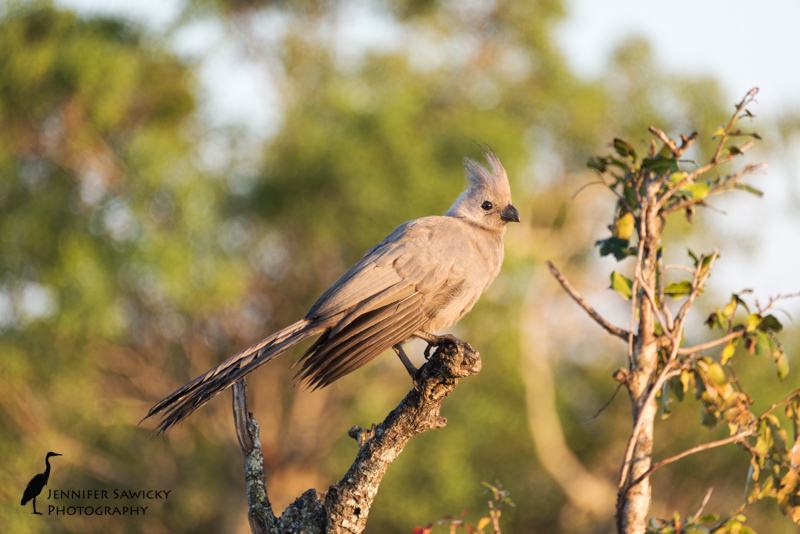
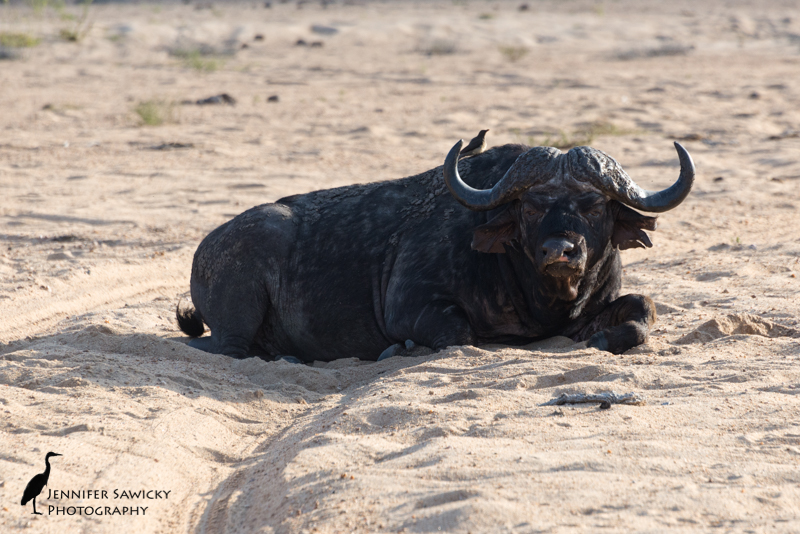



Please visit:
www.jennifersawickyphotography.com for wildlife, landscape and nature inspired artwork.
and
https://shopvida.com/collections/voices/jennifer-sawicky for textiles inspired by my photography.
This leopard was called Piva on Londolozi, and he was an incredibly impressive animal. At 7, he held a great territory and was one of the largest leopards in the area. When I was there in May, on our first game drive we found him having a territory stand-off with another male; and it was so interesting to watch the dynamics of the two animals.
Sadly, I read that this leopard was killed by a pride of lions over the weekend. The circle of life and the battle for space and resources can oftentimes be a cruel one to watch.
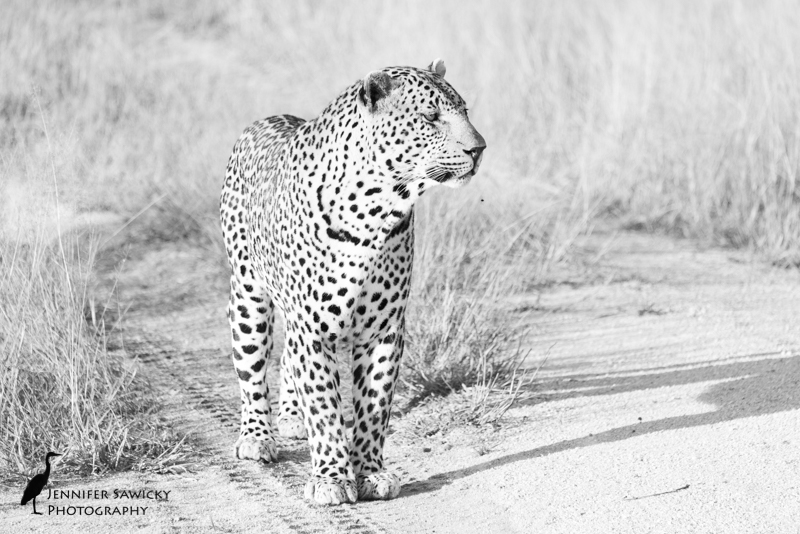
Please visit:
www.jennifersawickyphotography.com for wildlife, landscape and nature inspired artwork.
and
https://shopvida.com/collections/voices/jennifer-sawicky for textiles inspired by my photography.
Wildfires have been raging in British Columbia for the past two months, and while thankfully we have remained removed from the height of the chaos, we are definitely close enough to feel the effects. My city has been one of several hubs for people that have been evacuated from their homes due to the proximity of the fires, and depending on the wind and other atmospheric conditions, we have been on occasion inundated with smoke.
The past week has been smoky on and off and I’ve been photographing the intensely orange sunrises over the past few days; things turned quite eerie though yesterday afternoon, and this morning the smoke is so thick, I’ll be foregoing my normal walk around the neighbourhood. It’s rained on and off through the night, and it smells like a huge, washed out campfire outside at the moment.
Here are few images from the past week.
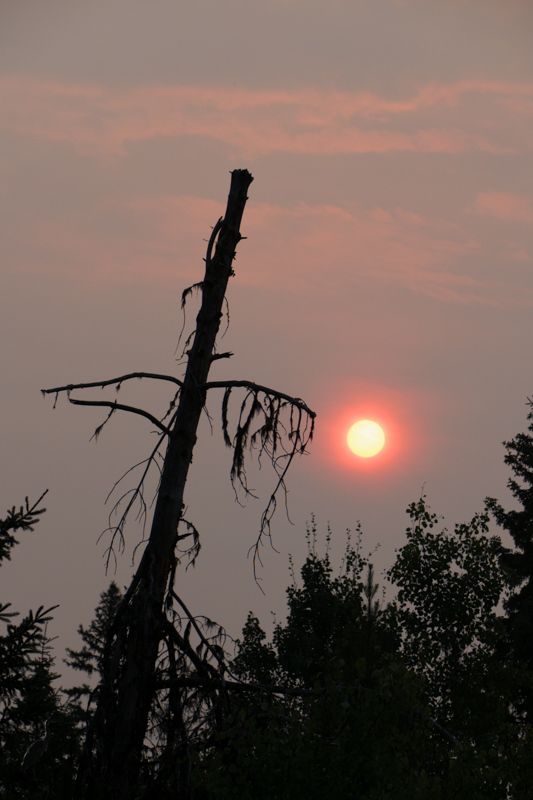
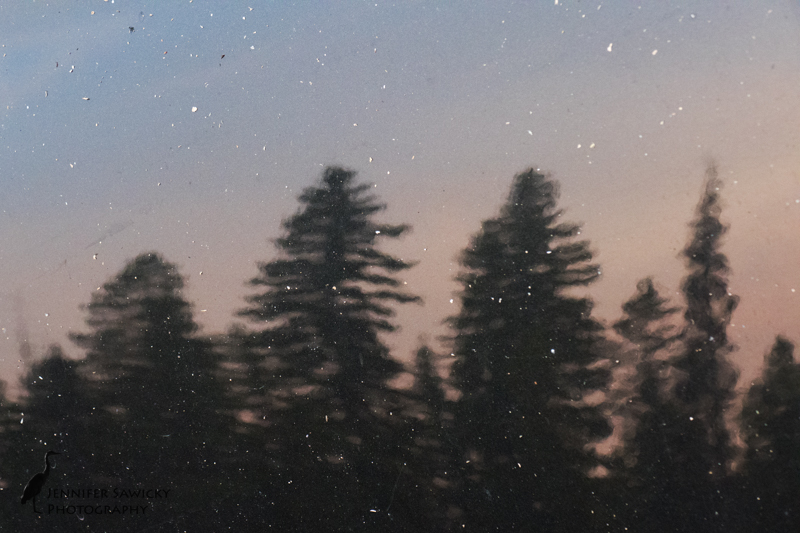
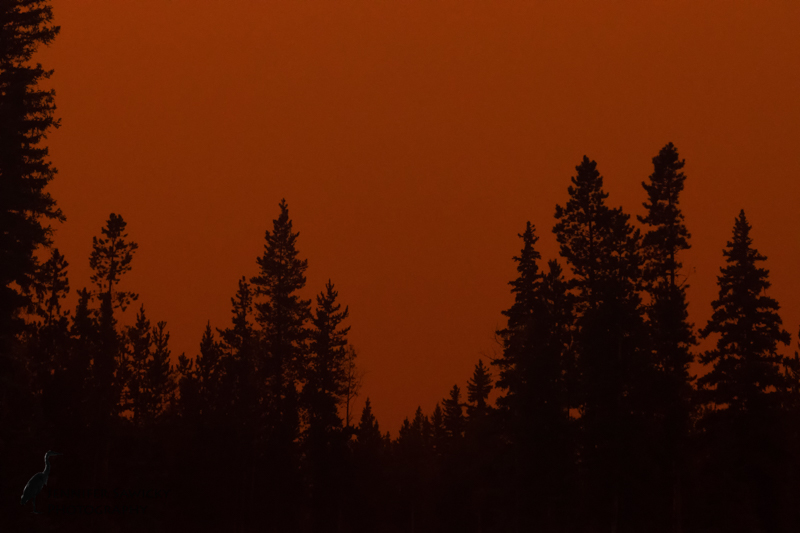
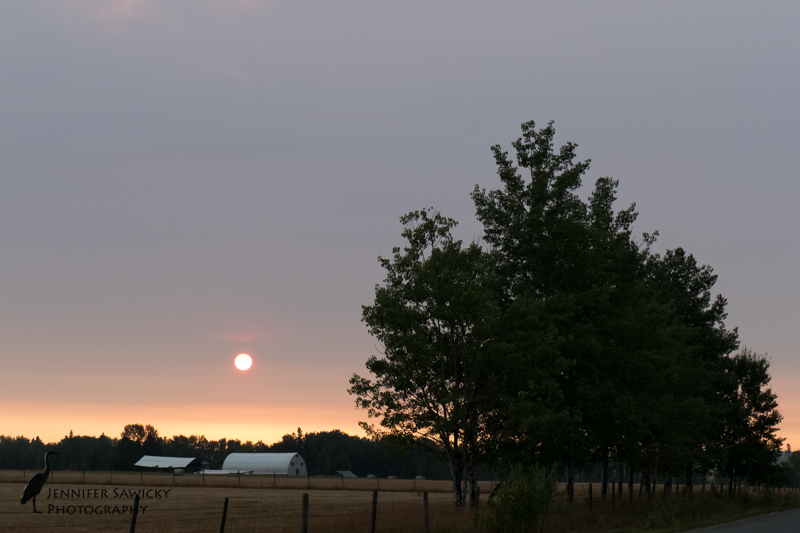
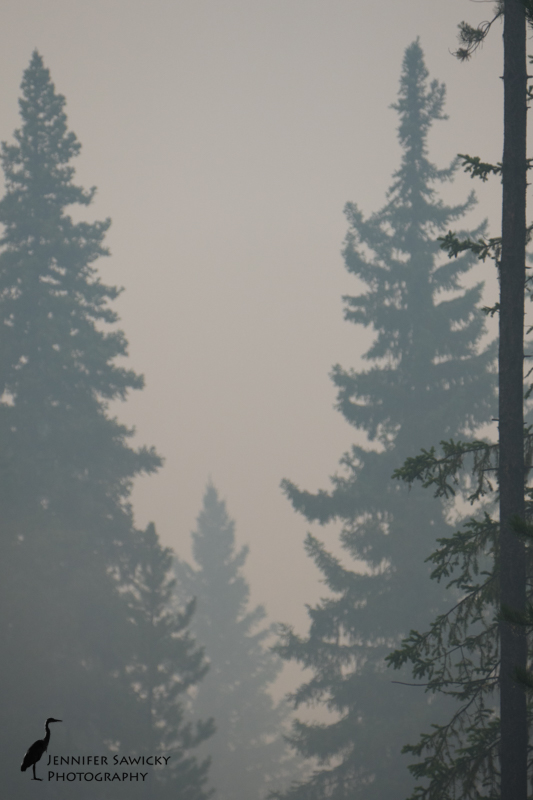

The photo challenge prompt for this week is elemental. I was able to find a few photos in the edit queue from my last trip that fit in with this theme perfectly. Here are my images that represent earth, air, water and fire.
I hope you enjoy!
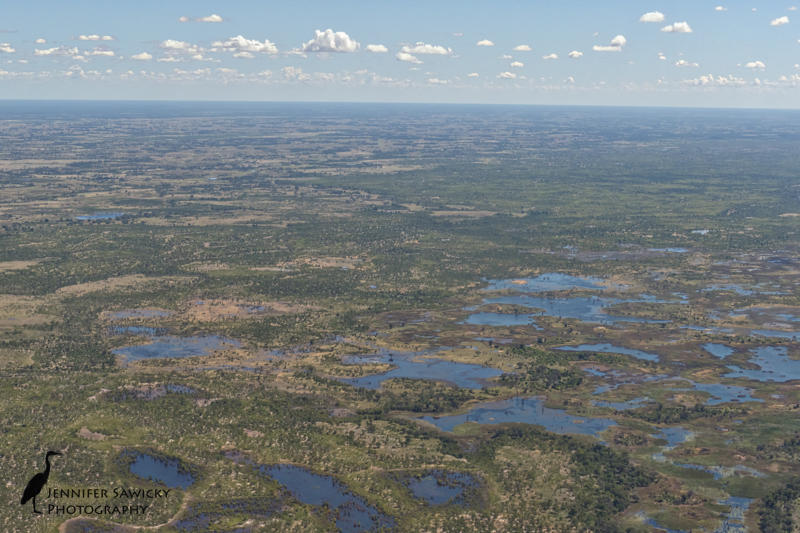


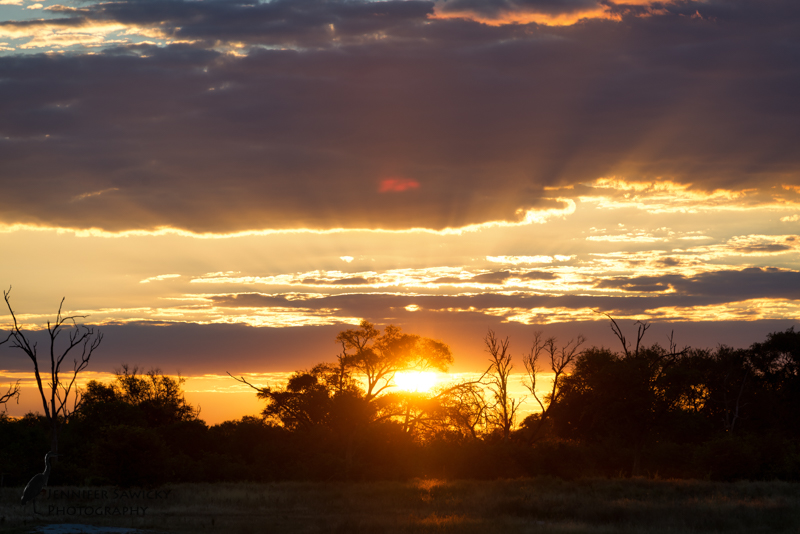
Please visit:
www.jennifersawickyphotography.com for wildlife, landscape and nature inspired artwork.
and
https://shopvida.com/collections/voices/jennifer-sawicky for textiles inspired by my photography.